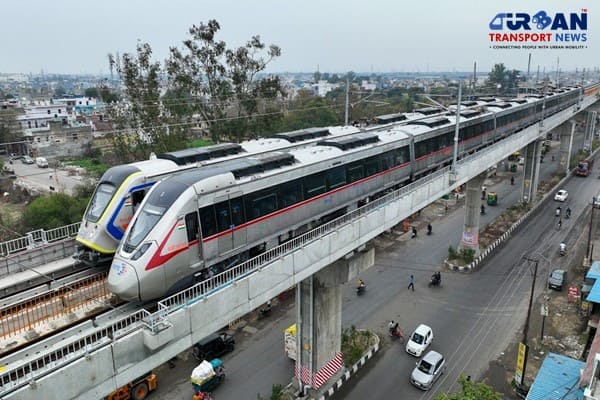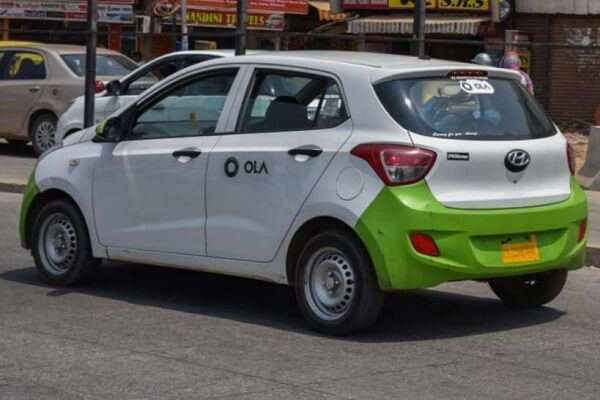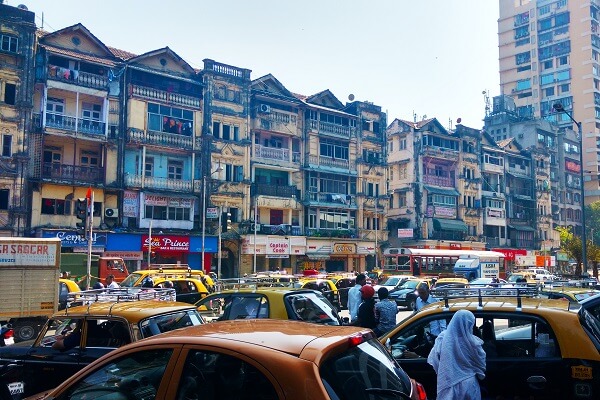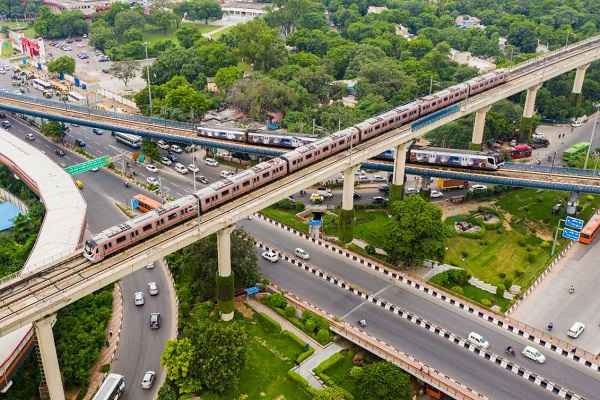 India and Bhutan to Build First-Ever Rail Link: ₹4,033 Cr Project to Boost Regional Connectivity
India and Bhutan to Build First-Ever Rail Link: ₹4,033 Cr Project to Boost Regional Connectivity Patna to launch Eco-Friendly Water Metro; Trial Run soon between Digha and Kangan Ghats
Patna to launch Eco-Friendly Water Metro; Trial Run soon between Digha and Kangan Ghats Air India Group set to launch Flights Operations from Navi Mumbai International Airport
Air India Group set to launch Flights Operations from Navi Mumbai International Airport Chennai to launch 25-Year Mobility Plan with Unified QR Ticketing and One-App Transit System
Chennai to launch 25-Year Mobility Plan with Unified QR Ticketing and One-App Transit System Kochi Metro bags ₹4.4 crore contract to prepare DPR for Mumbai Water Metro Proejct
Kochi Metro bags ₹4.4 crore contract to prepare DPR for Mumbai Water Metro Proejct Navi Mumbai International Airport set for September launch; IndiGo and Akasa Air to lead Operations
Navi Mumbai International Airport set for September launch; IndiGo and Akasa Air to lead Operations Noida International Airport to be Inaugurated on October 30, Commercial Flights in 45 Days
Noida International Airport to be Inaugurated on October 30, Commercial Flights in 45 Days India Makes History: Namo Bharat RRTS and Meerut Metro to Run on Same Track
India Makes History: Namo Bharat RRTS and Meerut Metro to Run on Same Track How the Standard for Car and Truck Wheels Is Changing
How the Standard for Car and Truck Wheels Is Changing How Cross-Docking Is Reshaping Urban Logistics
How Cross-Docking Is Reshaping Urban Logistics
Urban Mobility: What causes India’s congestion?

Congestion is a big barrier to economic development and the quality of life is well known, but little is known about what causes congestion. Is India condemned to a complete gridlock due to its fast pace of urbanization? Is urban mobility slow only at peak hours or slow all the time? Will city planning, congestion pricing, or increased investments in primary roads solve the congestion problem? A better understanding of the causal factors behind congestion will improve the policy measures to improve urban mobility in India and strengthen the interactions between transportation networks, market integration, and globalization that will drive future economic growth and job creation.
Transportation remains the largest sector of lending by the World Bank and regional lending institutions, representing more than 20% of their net commitments. Demand for infrastructure investments will continue to increase in the future. Since the costs of congestion, transportation infrastructure and global warming will only increase in the future, transportation policy should be based on the careful analysis of high-quality data, and not on the claims of advocacy groups.
Using comprehensive data, we examined causal factors of congestion in 154 cities in India, with a popular web mapping and transportation service. We measured vehicular mobility within cities and decomposed it into congested and uncongested mobility.
Indian cities are slow due to uncongested mobility and not due to mobility delays. They are slow at all times, even at night in the absence of traffic. This is due to the multipurpose nature of urban transport, where roads are multipurpose public goods, used by various classes of motorised and non-motorised vehicles, as well as a wide variety of other users such as street-sellers, children playing and animals.
An index of uncongested mobility explains more than 50% of the variance in overall mobility across cities in India. Our welfare analysis suggests that there are much larger gains from a 10% improvement in uncongested mobility than from implementing optimal congestion pricing in urban India.
This challenges the conventional wisdom that traffic congestion is the main reason why some cities are slow and some are fast. Take the example of Kolkata, which is, in fact, the least congested of the four largest cities in India, but the slowest because of low uncongested mobility. This distinction has important policy implications because uncongested speed cannot be improved by congestion pricing or ridesharing promotion, or restriction, or other policies often proposed to combat congestion.
Overall, urbanization is associated with better mobility, contrary to the conventional wisdom that urban growth has condemned developing cities to complete gridlock. While, in principle, variation in uncongested mobility could be due to many city attributes, such as city planning, we interpret it as being primarily due to the quality of the road network.
Policy challenge
Travel patterns in India are different from those in the US. Indian cities do not experience the familiar twin peak congestion patterns, due to morning and evening commutes. There is almost no distinct morning peak, and instead of a slow build-up of congestion that often persists until late into the evening. Light rainfall appears to speed up traffic slightly.
These unique patterns are consistent with Indian roads being multipurpose public goods, serving a wide variety of uses, other than motorised transport that slow down travel. If this conjecture is correct, then technologies and policies for separating roadway uses appears especially promising, with appropriate consideration for the costs of restricting non-vehicle uses. India’s unique travel patterns imply that country-level policies, and local-specific investments, are necessary and that using our comprehensive data sources and methodology to study other countries individually may uncover distinctive patterns.
Given that urban mobility is slow at all times, not just peak times, standard policy recommendations like congestion pricing, or other types of travel restrictions, may do little to improve mobility in India. Instead, scaling up investments in travel infrastructure is the only way to improve uncongested mobility. There is a positive role for the design of a regular network grid and the presence of more primary roads, and future research and engineering studies can identify cost-effective ways to build faster urban networks.
There is a popular view that urbanisation and economic development lead to ever-larger cities and increased rates of motorisation, and these two features will eventually lead to complete gridlock. However, economic development also brings about better travel infrastructure which facilitates uncongested mobility. In fact, indicators of urban economic development such as faster recent population growth, higher income levels and higher motorisation rates are generally associated with better overall mobility.
Several city attributes are consistently correlated with mobility and its components. We find that population and land area are key correlates of city mobility. We also find that both recent population growth and a measure of cars per capita are positively associated with uncongested mobility but also with congestion. Higher-income cities have higher uncongested mobility, but also higher congestion, leading to a hill-shaped relationship between income and overall mobility. We do find an important role for congestion in the largest cities, especially close to their centres.
Urban transportation in developing countries is prioritised for massive investments. A lot more can be learned from the data we use here. It can be used to learn about the fundamentals of urban travel beyond mobility and congestion. It can also potentially play an important role in our understanding of patterns of land use and property prices in cities in relation to transportation. Given the low cost of collecting such data, large samples can easily be targeted to small areas and narrow issues. This data can also be collected at a much higher frequency than the typical five- to eight-year gap between consecutive traditional travel surveys, thus allowing policy changes to be evaluated over the short run.







